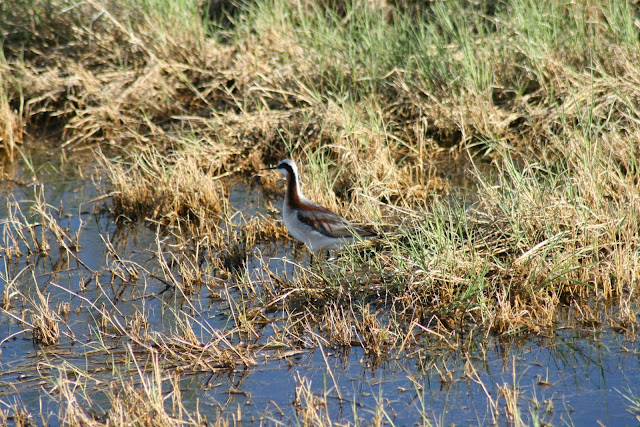When I first started as a Naturalist at Farmington Bay I went through several training sessions to learn about Farmington Bay, the Great Salt Lake, Wetlands and birds. One bird that was always mentioned was the Wilson's Phalarope because it is such an important indicator species and because it is one of the birds that helped designate the Great Salt Lake as a Western Hemisphere Shorebird Preserve because the worlds largest concentration of Wilson's Phalaropes Stage at the Great Salt Lake during spring and fall migrations. Some interesting facts about the Phalarope are it's long non-stop migrations from their nesting grounds in the wetlands of the American Prairies of central U.S and Canada to their wintering grounds of South America.

They will fly several thousand miles nonstop to their staging areas in the western U.S. the largest concentration staging at the Great Salt Lake. They loose a third of their body weight during the flight and spend several weeks feeding/staging to gain back that weight then move on and finish their migration. They have a habit of feeding while swimming unlike other shorebirds that feed on mudflats or wading in shallow water, Phalaropes swim spinning in circles to create a vortex that pulls in brine shrimp, macro-invertebrates and crustaceans which they will pick out of the water with their needle-like bills.
Role reversals of the male and female Phalaropes unlike most birds the female is larger and more brightly colored and she competes for males, the female will lay her eggs and then leave the male to tend to the nest and often mate with several males leaving them all to tend the nest before heading south to their wintering grounds. I was fascinated with this bird, but it wasn't until my second year of volunteering that I finally saw one.

I saw my first Phalarope while birding with my brother in law Frank and my dad at Bear River Bird Refuge on the North end of the Great Salt lake. The same day I saw my first Northern Pintail, and Ruddy Ducks.

While guiding a tour at Farmington Bay a few weeks later I saw my first large group of Phalaropes in one of the large ponds at Farmington Bay all of them spinning in circles. It was one of the most amazing things I had ever seen. Since that time I have seen thousands of Wilson's and Red-necked Phalaropes mostly along the causeway to Antelope Island on the Great Salt Lake. Flocks of thousands spinning in the water feeding or flying in great clouds much like starlings. The Wilson's Phalarope is truly an amazing bird.
Phalaropes late summer staging, feeding on brine shrimp at the Great Salt lake
Female breeding plumage during spring migration

Male in breeding plumage
Male and Female breeding plumage during spring migration











No comments:
Post a Comment